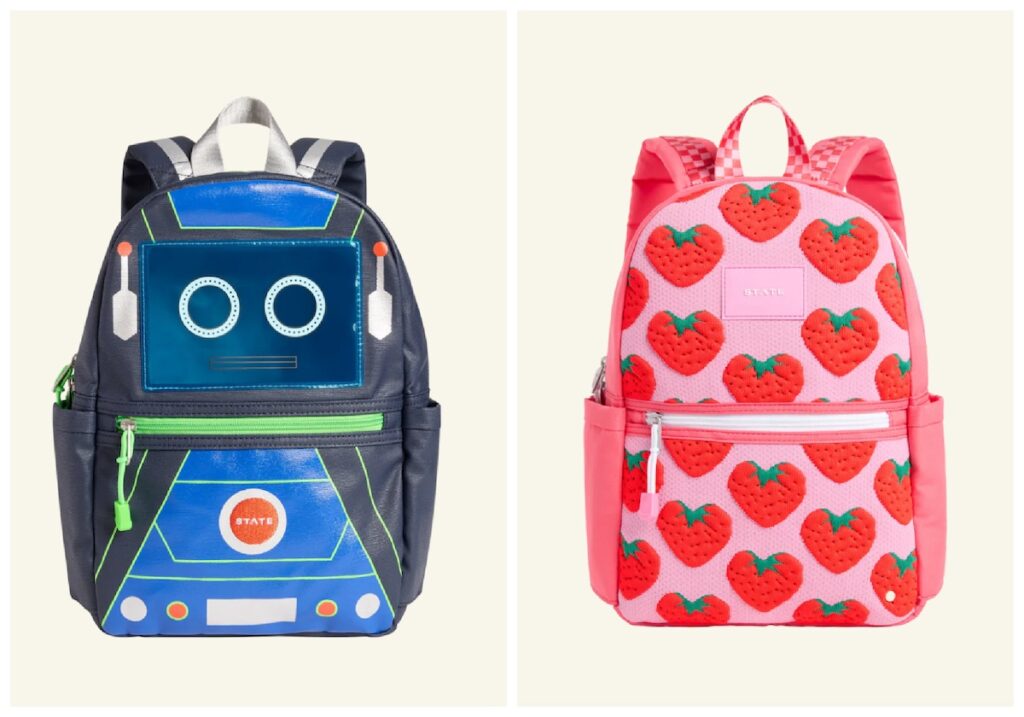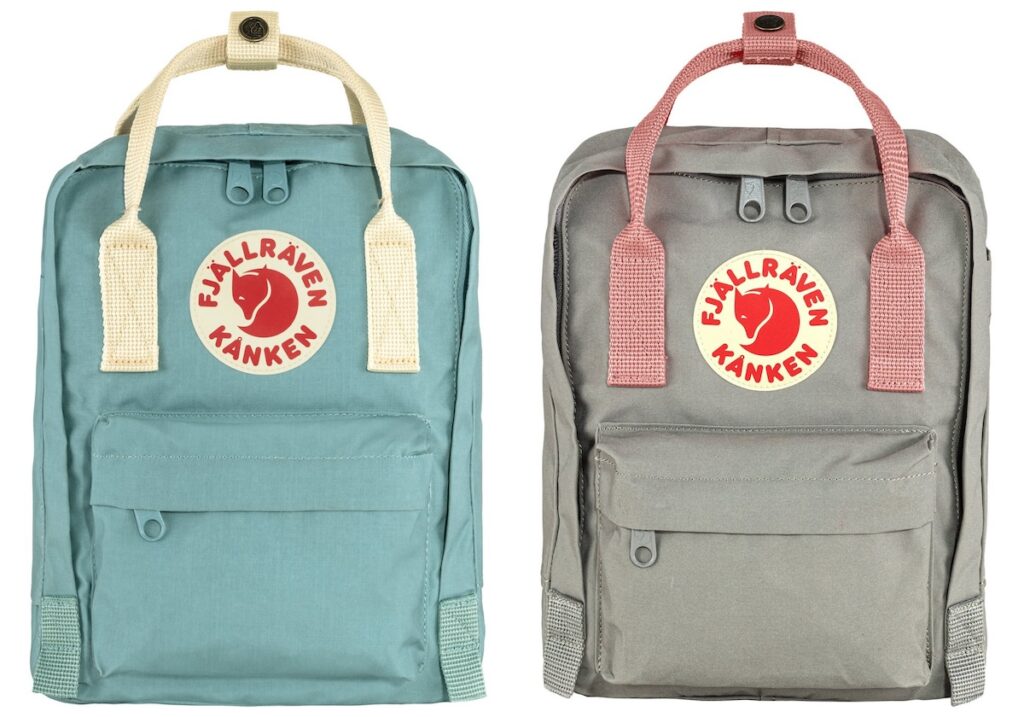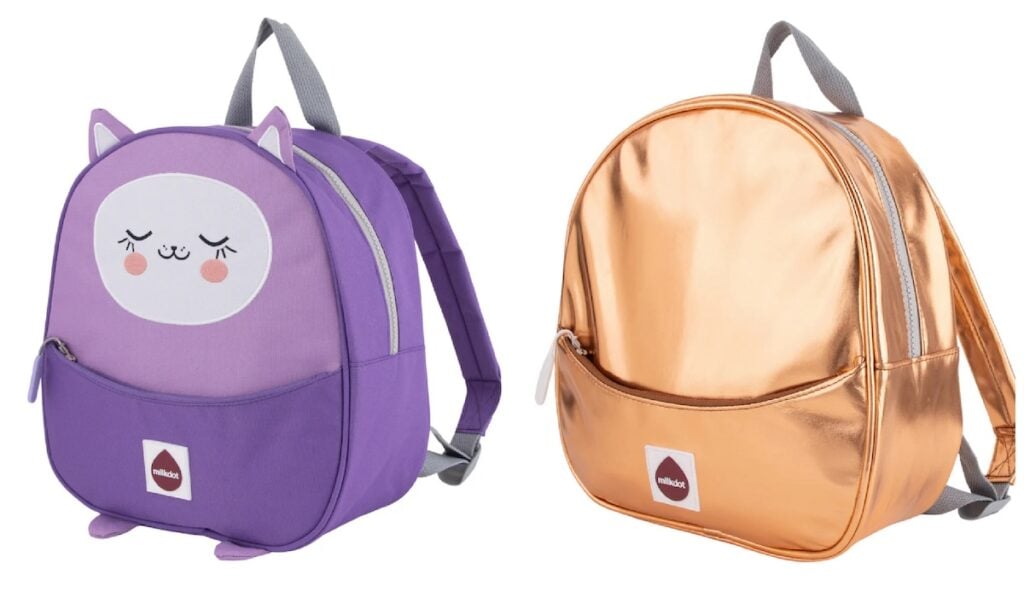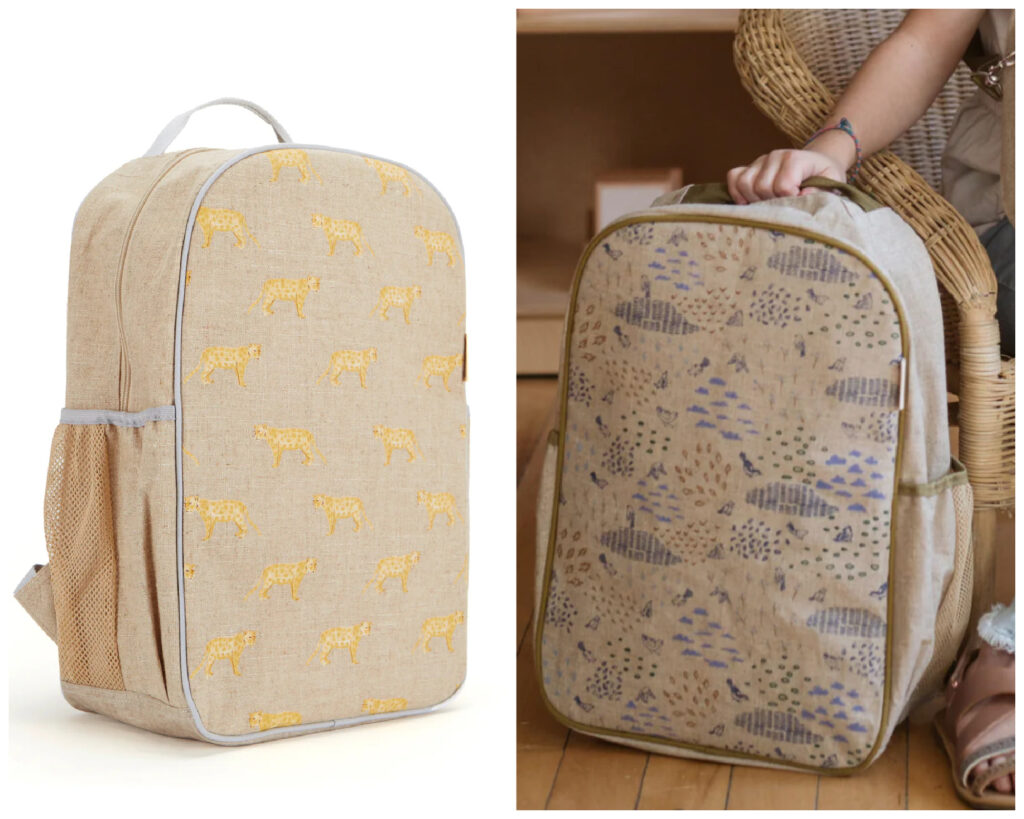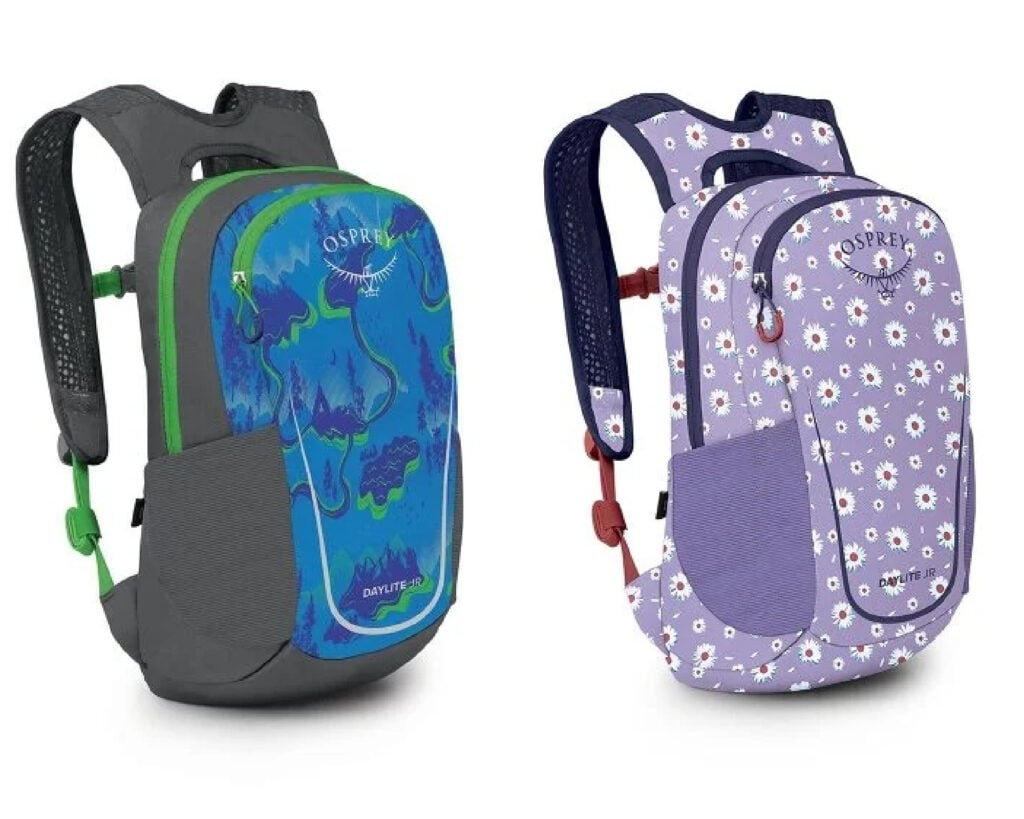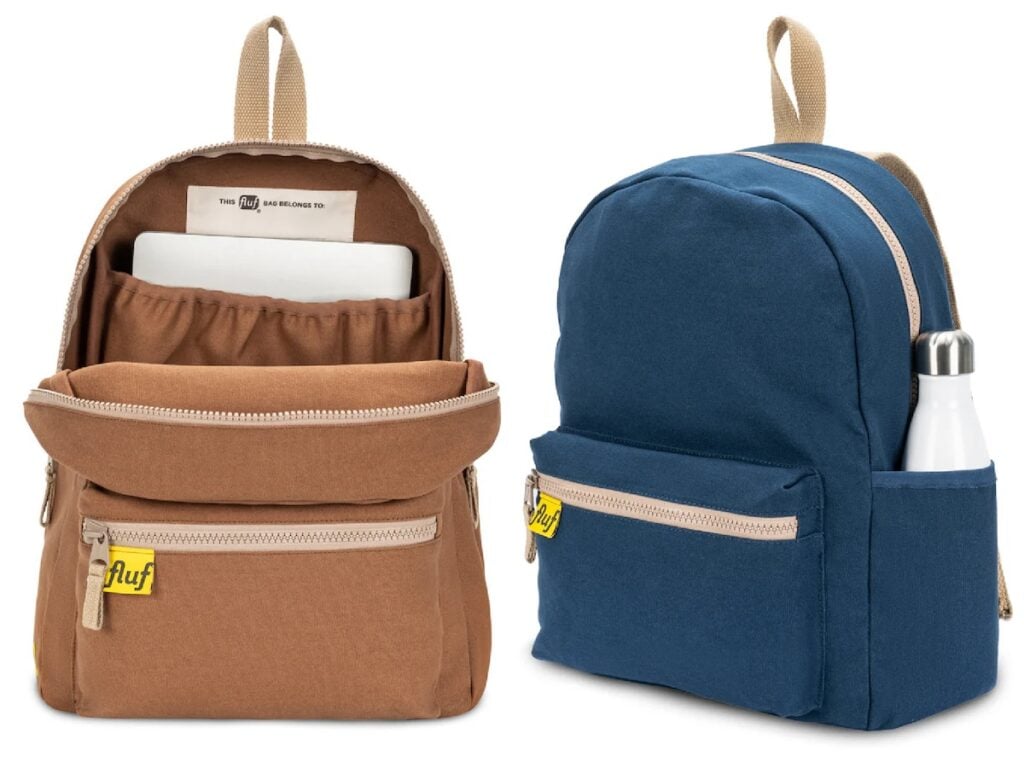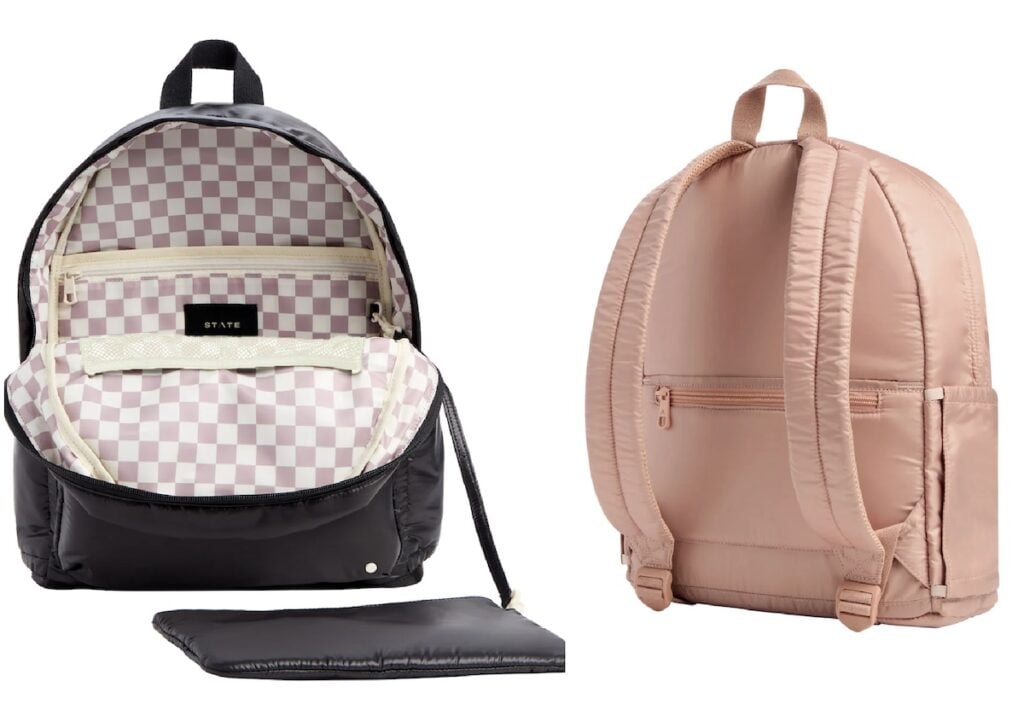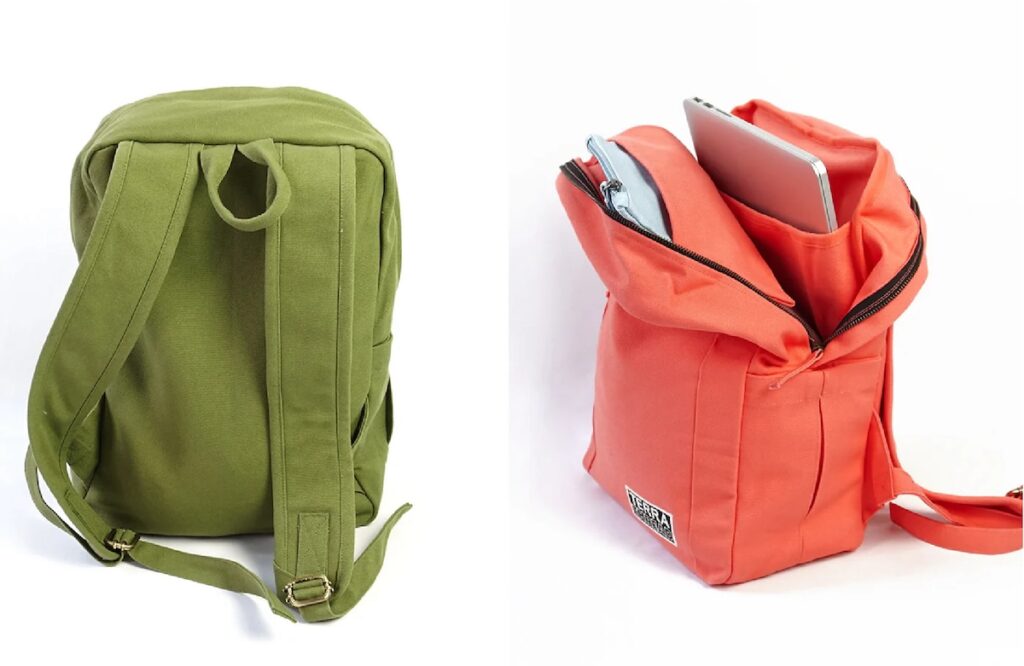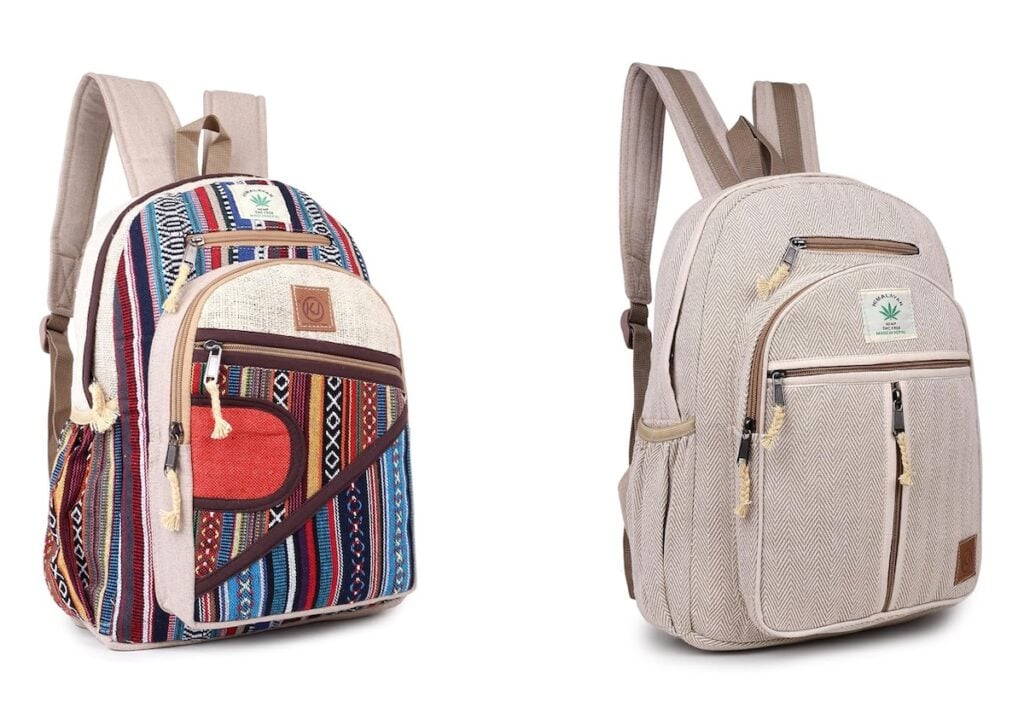Non-Toxic Backpacks for Kids by Age
School age kids spend a lot of time in close proximity to their backpacks. If you’re looking for a non-toxic backpack this school year, make sure you know which materials are safe and which aren’t.
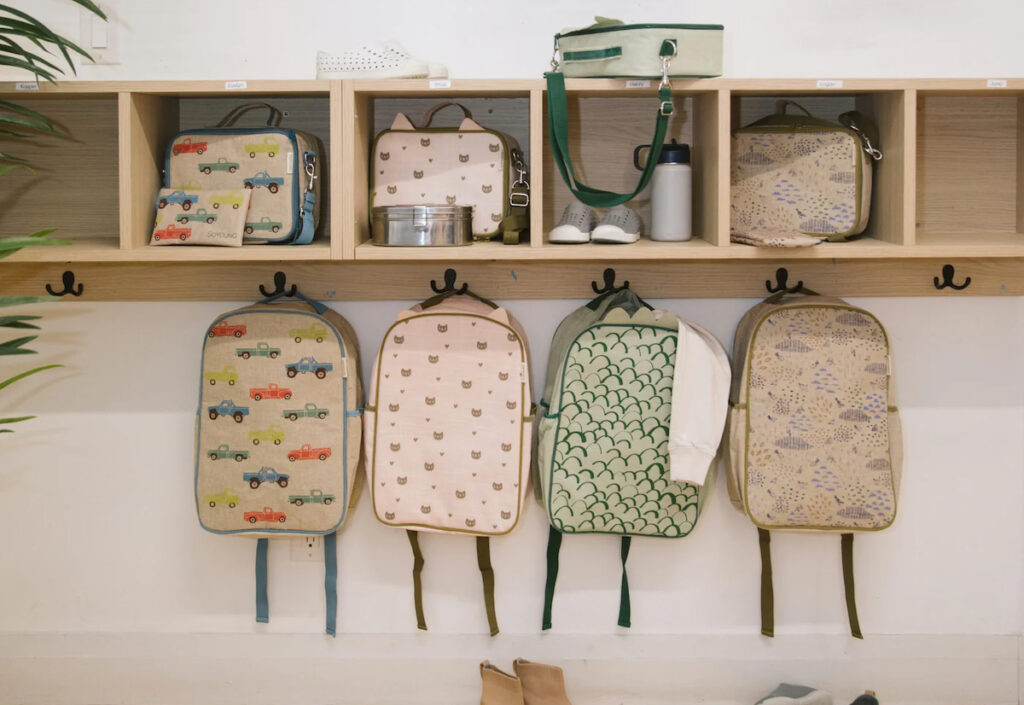
This article outlines harmful materials to avoid and recommends backpacks from brands that use safer materials.
Once the back-to-school season begins, there are so many decisions to make. From drowning in school supply lists to buying clothes for a growing child to making a healthy lunch that they’ll actually eat, decision fatigue is real.
That said, backpacks are a place where quality matters. Sure, they make quick trips to and from school. But sometimes, they hang them on students’ chairs, or older kids wear them all day, so the kids are in contact with them regularly.
There are plenty of durable, non-toxic, and eco-friendly backpacks available to last the long haul, so making an informed purchase is a great way to reduce chemical exposure and save your budget!
Toxic Chemicals in Backpacks
I am also always looking to purchase from companies that commit to not polluting the earth and for products that won’t end up in landfills.
This is important no matter how old your children are. If you can get backpacks that last the long haul or pass them down to your younger children, you’ll reduce your spending over time.
First, it is important to know which common backpack materials to avoid and which to look for when confirming their non-toxicity or low toxicity.
Toxic Materials to Avoid
PVC – Polyvinyl Chloride is flexible plastic found in some backpacks for kids, and recognizable by it’s shiny plastic look. PVC contains lead, phthalates, and BPA. The production of PVC also pollutes the environment.
PFAS – These chemicals make fabric waterproof. PFAS are considered forever chemicals, and they are linked to a whole host of health problems.
Phthalates – These chemicals make PVC soft and flexible, which is noticeable in many children’s backpacks. They are suspected endocrine disruptors and have been linked to neurodevelopmental problems in children.
Lead – Another chemical that is used in the production of PVC and found in the materials of children’s backpacks. Lead exposure has known serious health effects on children’s neurological development.
Recycled plastic – This is a tricky one for me. It’s recycled, and I love a reused resource! The issue that makes me question it for something my kiddos are using daily is that it’s impossible to know what type of plastic it is recycled from. Hence, it poses the possibility of all of the issues listed above.
Non-Toxic Backpack Materials
Organic cotton or canvas – Any natural fibers like cotton, canvas, or hemp are great for kids’ backpacks. They won’t be as waterproof as other materials, but using otter wax or soy wax can definitely help.
Nylon and polyester – Both of these synthetic fabrics are non-toxic for human contact. They are lower toxicity than the above materials, but some of the processes do still cause harm to the environment. They may be more durable and water resistant than natural fibers, as well as more affordable.
Hemp – An environmentally friendly option, hemp is great for bags and clothing. The only problem is that it’s harder to find.
Polyurethane is far from perfect, but in this case, it’s better than materials that contain PFAS (forever chemicals). If you live in a majorly rainy place like I do, and your kids walk to school, polyurethane is a less-toxic water proof choice of material. Once it’s dried and cured and manufactured into a backpack, it is said to be safe.
Look for bluesign – Some backpacks are bluesign approved, which is a good indicator that it’s a healthy choice for your kids and the environment. Bluesign partners with brands and manufacturers to ensure that textiles do not negatively impact people or the environment.
Non-Toxic and Eco-Friendly Backpacks
Here’s our list of recommendations for safe backpacks by age group.
For Toddlers and Preschoolers
Little ones can easily be overwhelmed by huge backpacks. And while there’s no shortage of adorable options, many of the styles you can find in big box stores aren’t non-toxic. You can rest easy knowing these pint-sized bags are safe for your little one.
State Kane Mini Backpacks are a perfect fit for toddlers from 2-4 and have a wide selection of cute designs for kids to choose from. These backpacks are made from 100% polyester on the main body and 100% recycled polyester for the inner lining.
The Kanken Mini Backpack by Fjallraven is a great size for small kids. They are durable, water-resistant, and quick-drying. The straps adjust to fit various sizes, making it easy to use this backpack long-term. The fabric is Vinylon F, which is non-toxic, and there are no PFAS in production.
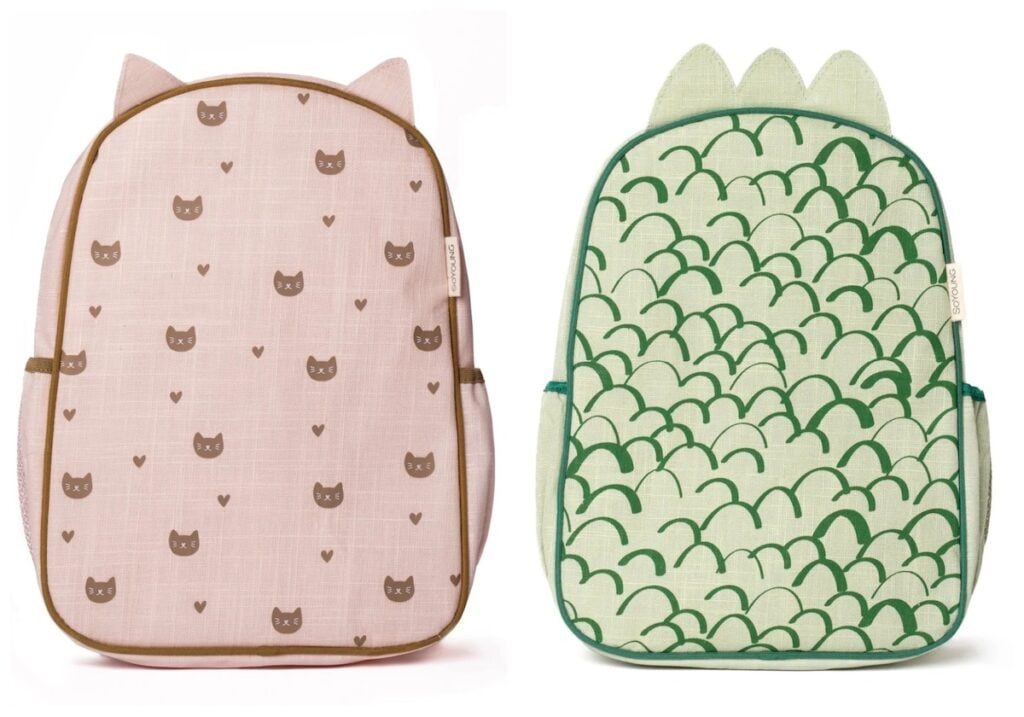
SoYoung has the cutest line of non-toxic toddler backpacks. These backpacks are just the right size for preschoolers and kindergarteners (ages 2-5) and have adjustable straps. Made of durable cotton and linen with adorable designs, the best part of these backpacks is that they’re machine washable. They are PVC, phthalate, lead, and BPA-free.
Milkdot has a great selection of mini backpacks for toddlers ages 3 and up. Made from durable denier fabric (polyester), they are PVC, phthalate, lead, and BPA-free.
Grade Schoolers
Elementary school kids come in all shapes and sizes… and so do these non-toxic backpacks. You’re sure to find something cute, safe, and budget-friendly here.
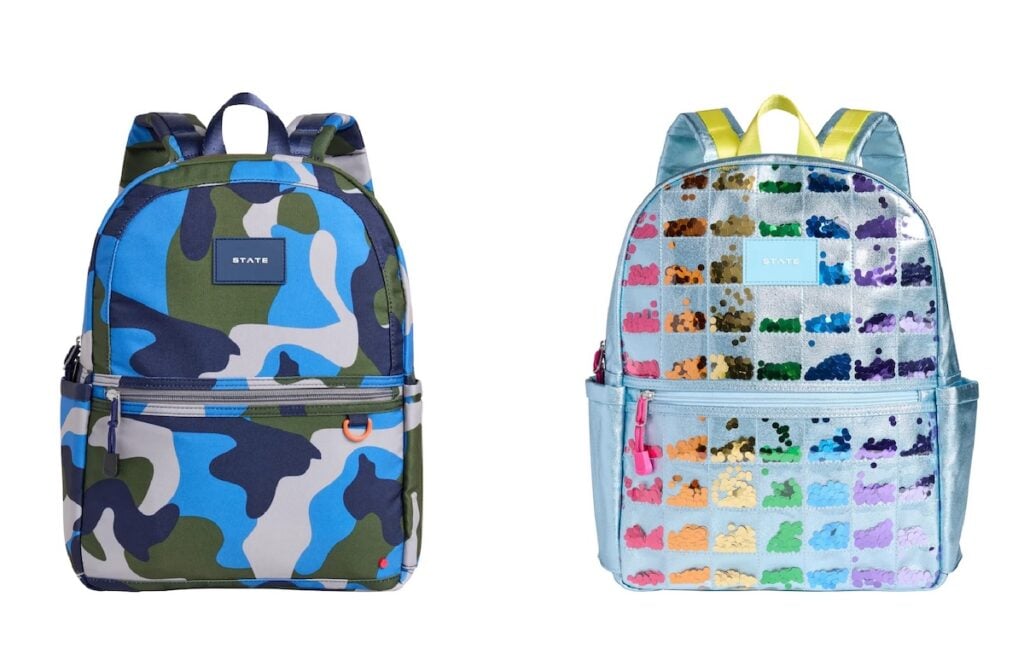
Young grade schoolers from kindergarten through third grade (depending on the child) will love the State Kane Backpack!
Growing kids in upper grade school might want a little more with the double pocket version. With lots of patterns and color blocks to choose from, there is really something for everyone in this line of non-toxic backpacks. The fabric is 100% polyester on the main body, and 100% recycled polyester for the inner lining.
The Zem Mini Backpack by Terra Thread is the perfect size for grade schoolers. It’s durable and made with certified organic cotton canvas and lead-free metal zippers.
The grade school version of the SoYoung nontoxic backpacks is just as cute and made from the same safe materials as the toddler ones. They are the perfect size for ages 6-11, with adjustable straps. Made with linen, cotton, and nylon, they are free from PVC, phthalates, lead, and BPA.
Osprey’s Daylite Jr. kids’ backpack has great features like a whistle, an internal name tag, and a hydration sleeve, making it perfect for school or a hike. These packs are bluesign approved, made from recycled polyester, and coated without PFAS.
Older Kids, Teens, and Adults
Big kids probably don’t mindlessly chew on the straps of their backpacks, but I’ve seen more than one tween or teen use one as a pillow. Now that I’m a few kids in, I know lockers are out of fashion (for some unknown reason).
My kids (and probably yours!) wear backpacks all day. So, they need to be durable and made with quality materials that aren’t going to pollute or damage their systems.
The Fluf B Pack is a great choice for middle schoolers, high schoolers, or adults. This mid-size pack is made of sturdy organic cotton canvas and is machine washable. It has a water bottle pocket and an interior laptop pocket, which suits today’s older kids perfectly. All Fluf products are ethically made.
Teens and adults will love the State Lorimer Backpack. It has plenty of pockets and comes in sleek colors. The outer shell is 100% nylon and the inner lining is 100% polyester.
Terra Thread makes stylish, sustainable backpacks made with certified organic cotton canvas and lead-free metal zippers. Try the Earth Backpack for big kids and adults.
Hemp is an excellent safe, nontoxic backpack material. And these bags from KayJay Styles are handmade from pure Himalayan hemp and heavy duty cotton. Handmade means each one is unique, and the size, number of pockets, and capacity are all super useful.
Popular for good reason, the Classic Kanken backpack from Fjallraven comes in a wonderful variety of colors. It boasts durability, water resistance, and no PFAS used in manufacturing. The fabric is Vinylon F which is non-toxic.

